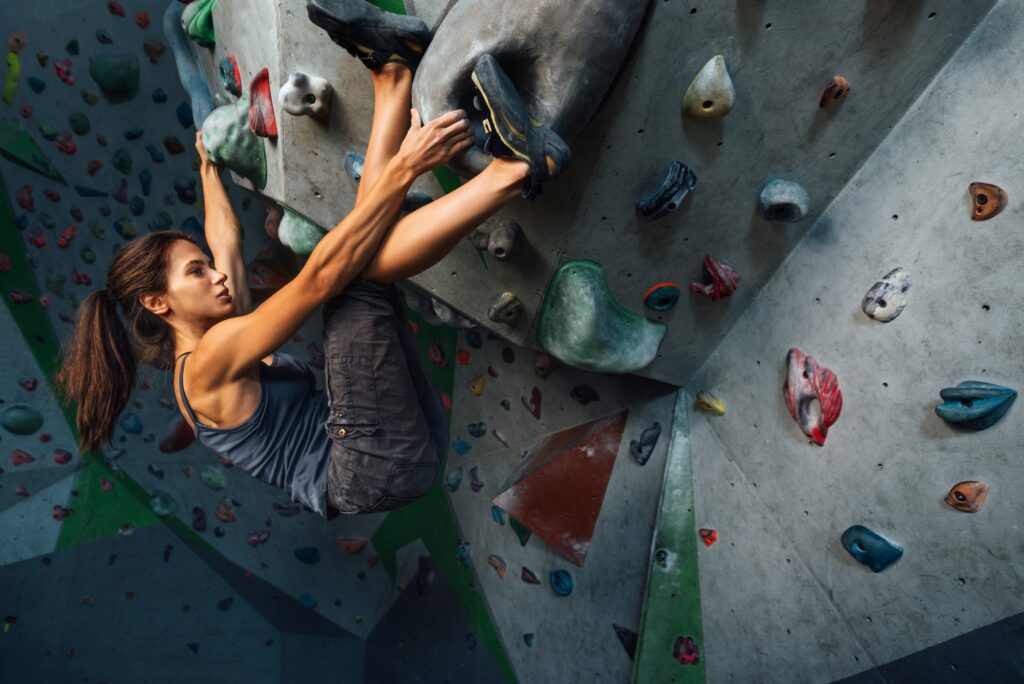
Common Rock Climbing Injuries
If you’re looking for an exhilarating and challenging new workout, you can’t beat rock climbing. Whether at an indoor rock climbing gym or outside, the thrill of summiting new heights attracts plenty of people to the sport.
But are you worried about staying safe while climbing? It’s natural to be concerned about climbing injuries, especially if you’re new to the sport.
Luckily, rock climbing is considered very safe, as long as you understand proper technique and you stick to climbs that are within your skill level. To learn more, keep reading to find a few of the most common climbing injuries—plus, what you can do to prevent them.
Cuts and Scrapes Are the Most Common Climbing Injuries
If you’re a fan of rock climbing, you probably know that cuts, scrapes, and cruises aren’t uncommon. Scrapes from the rock, climbing wall, or your equipment happen to everyone, and bruises from falling or banging against the wall are common too.
Luckily, most scrapes and bruises are minor, but they can be uncomfortable. To reduce your risk of scrapes, wear durable clothing that covers your skin and always take care when handling equipment.
If you are cut, wash the cut thoroughly, apply antibacterial ointment, and cover with a bandage.
Being aware of general rock climbing safety will help reduce injury as well. This includes taking training classes so you know how to climb safely and looking after your gear. Plus, make sure you reduce risks whenever possible.
Finger Injuries
The technical aspect of climbing means your fingers are bearing a lot of weight, especially when gripping onto small holds—commonly seen on climbs for experienced climbers.
Because your fingers are taking a lot of force each time you climb, there’s a higher risk of injury to your fingers and hands.
Climbers can experience tendon problems in their fingers, strains, and joint inflammation. Finger joint pain can be painful, but can often be treated with rest at home, ice or heat application, or over the counter medication for pain.
If you’re hoping to prevent finger injuries while climbing, always take your time to make precise climbing movements and know when a climb is above your technical level. You can also take the time to stretch your fingers and hands before starting a climb.
Calluses are another minor injury that occurs on the fingers when climbing. Although annoying, they will heal quickly and are inevitable if you’re a frequent climber.
Tennis Elbow
Tennis elbow is the common term for Lateral epicondylitis. It’s a tissue health issue where sufferers experience pain in the outer part of the elbow.
It tends to be caused by repetitive movements (such as playing tennis, hence the name) and is an injury from overuse of the muscle. Climbing requires repetitive movement each time you climb, with a lot of effort required from your elbows and forearms.
Therefore, it’s no surprise that rock climbers experience elbow injuries on occasion. If you’ve been climbing often and you’re starting to feel pain in your elbow, the best course of action is to take a few days off climbing and mix up your routine with other exercises.
It usually goes away on its own, so taking a break from climbing can help ease your symptoms. Make sure to always stretch before climbing as well.
Rotator Cuff Strain
Your rotator cuff is a group of muscles and tendons that surround your shoulder, helping it have a full range of movement. However, your shoulder gets a tough workout when climbing, as you’re constantly reaching above you and twisting from side to side.
Rotator cuff and shoulder injuries, such as strains and tears, can be caused by both overuse and by sudden movements, such as overreaching or falling. If you’re experiencing mild pain, the best course of action is rest and ice packs. Always see a doctor if the pain is intense or getting worse.
Like with most rock climbing injuries, the best way to prevent damage to your rotator cuff is properly stretching before climbing. Adding some resistance training to your workout can help strengthen your shoulder muscles as well, such as reverse flys or rowing movements, with workout bands or weights.
Meniscus Damage
The meniscus is part of the cartilage that makes up your knee, located between the bones that make up your shin and thigh. Twisting or flexing the knee can cause meniscus damage, but knee movement is an essential part of climbing.
You can look after your knees by always climbing in supportive shoes, stretching beforehand, and warming up before starting the climb, so your muscles have time to adjust.
Sprained Ankles
Climbers, and especially those who do bouldering, sometimes suffer from sprained ankles. This is often due to falling, as those who boulder often jump or fall down when they’re finished.
The best way to keep your ankles safe, in addition to wearing supportive shoes, is to learn safe fall techniques.
If you know how to fall safely, you’ll reduce injury to limbs, especially ankles and wrists. The best way to learn this is via a rock climbing safety course, offered at most gyms or climbing centers.
Stay Safe While Climbing
If done correctly, rock climbing is an extremely safe sport and something many people enjoy—it’s a fun way to stay in shape and to socialize.
However, no sport is without risk, so be aware of the common climbing injuries above and take extra precautions to stay safe. With a bit of care, common sense, and practice, you’ll stay safe for years to come and you’ll excel at your new passion for rock climbing!
Get started today and start enjoying the fun and challenges it can bring to your life.
Did you find this article useful? If so, please check out some of our other content to learn more.





More Stories
Why Canadian Lights Smokes Are the Preferred Choice of Most Smokers in Canada?
HRMS in WFH: Role and Remote Attendance Guide
Is Maybelline an Indian Company? Know all about